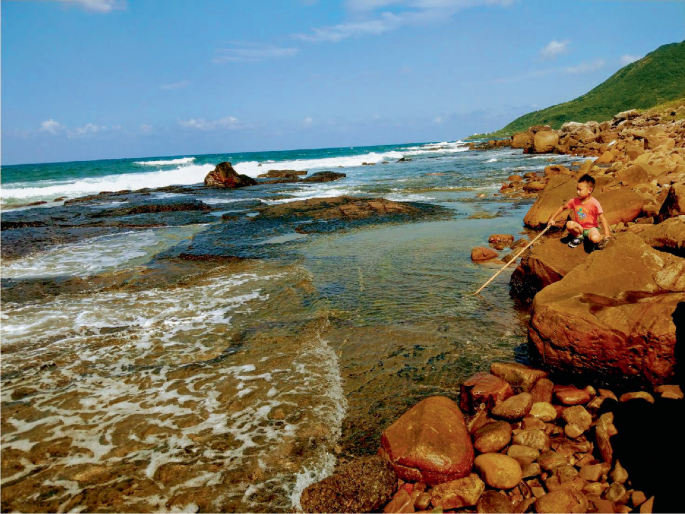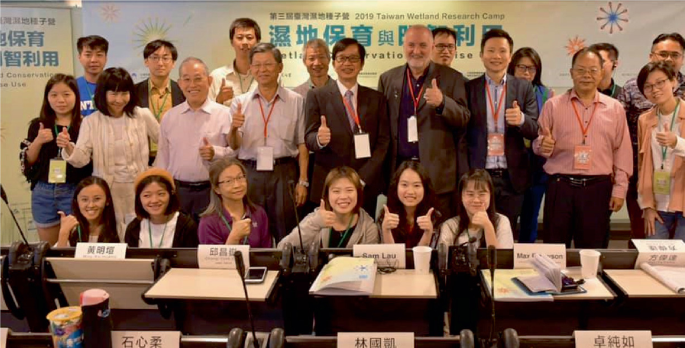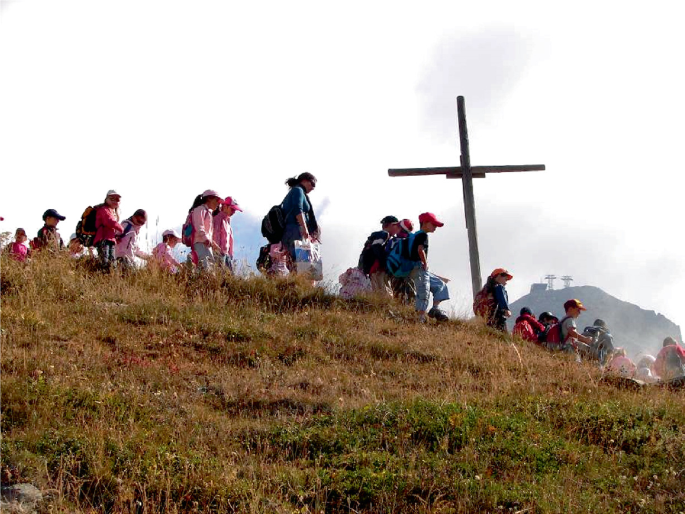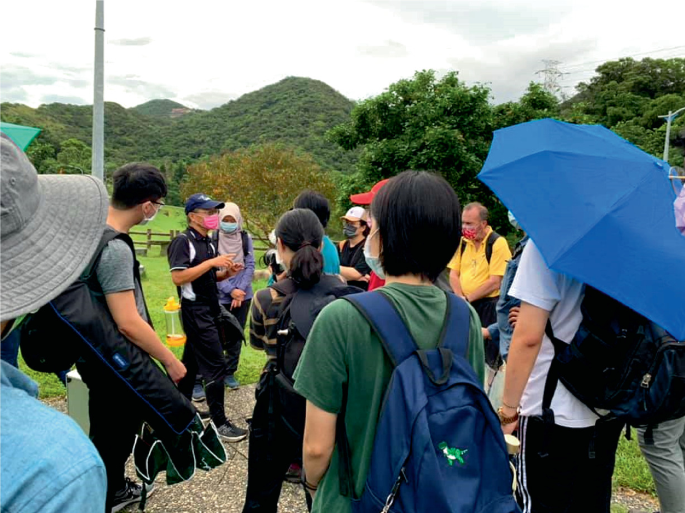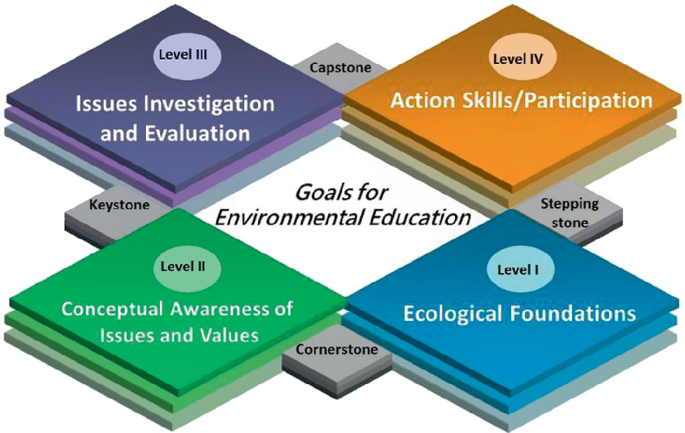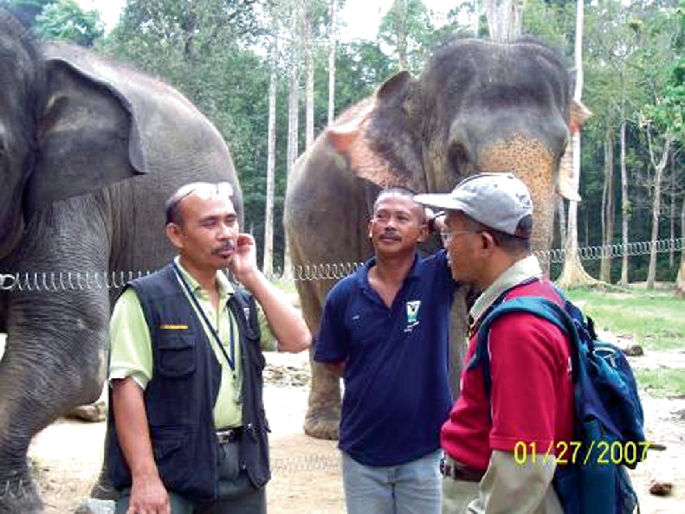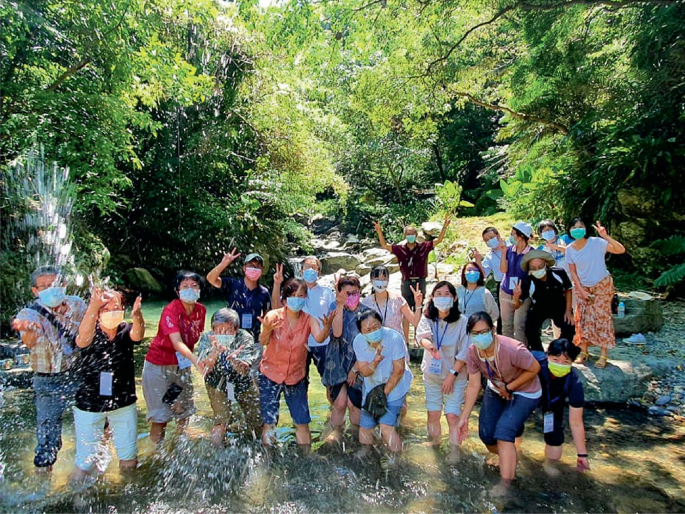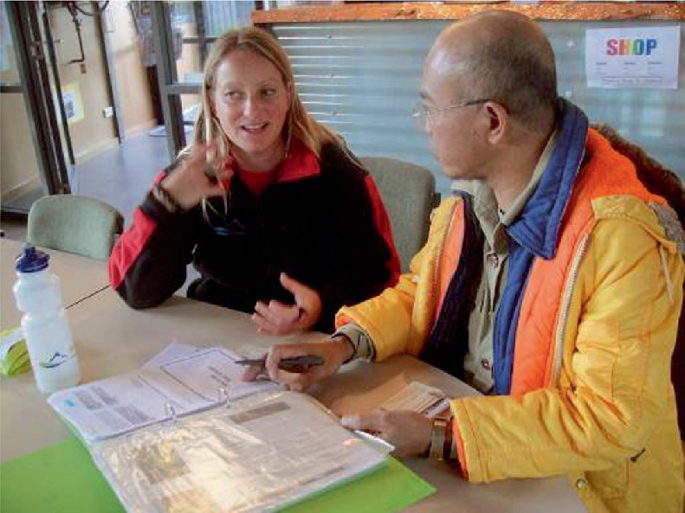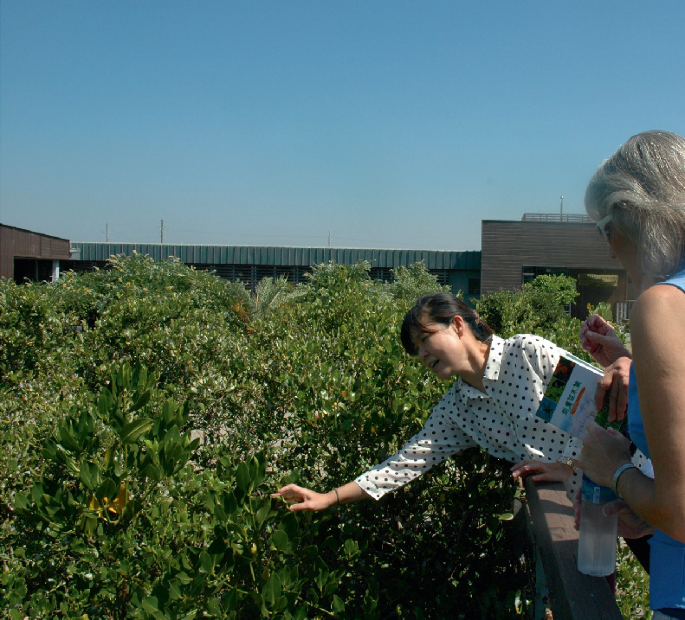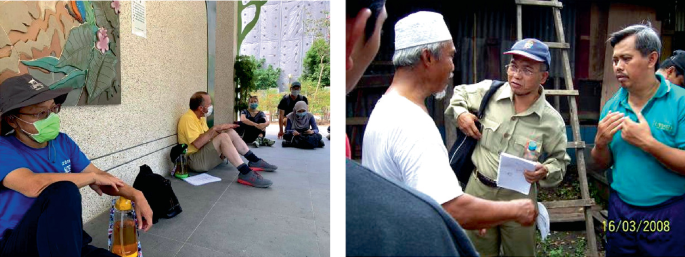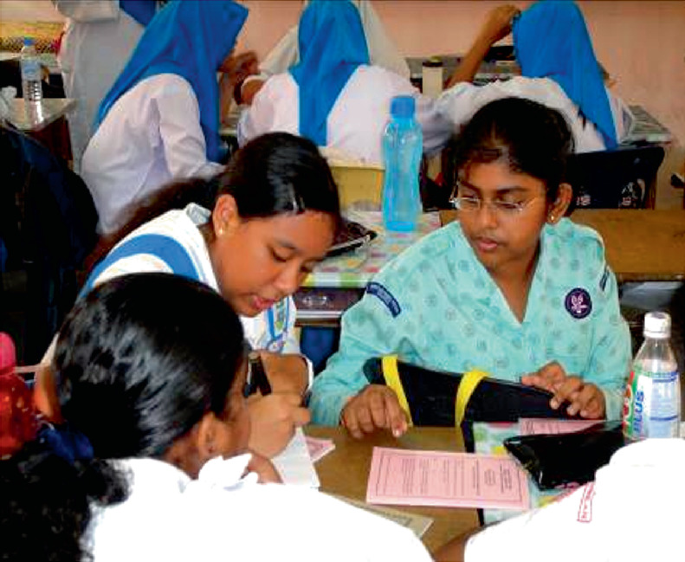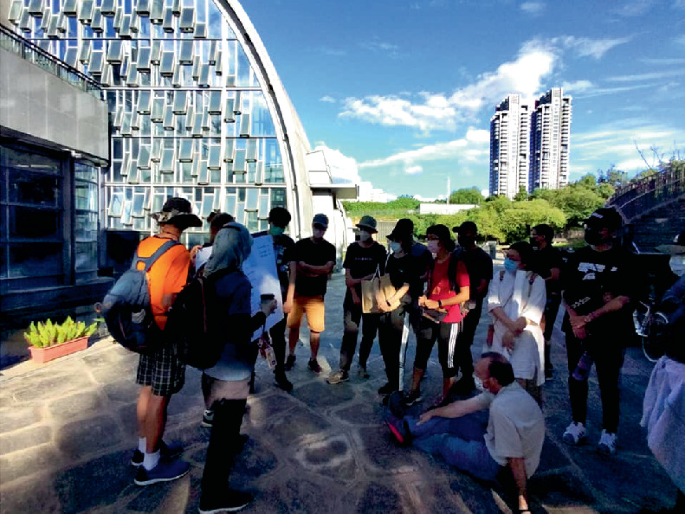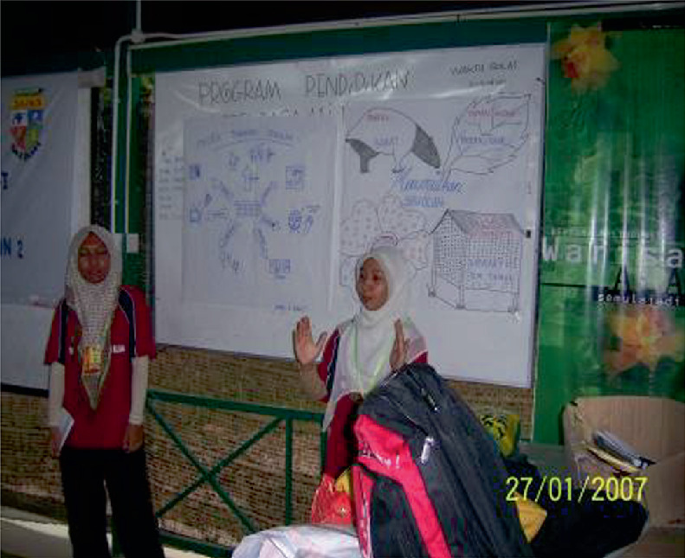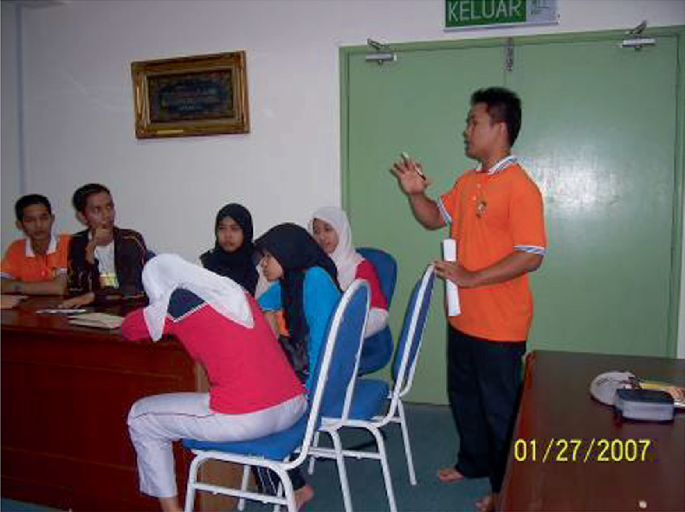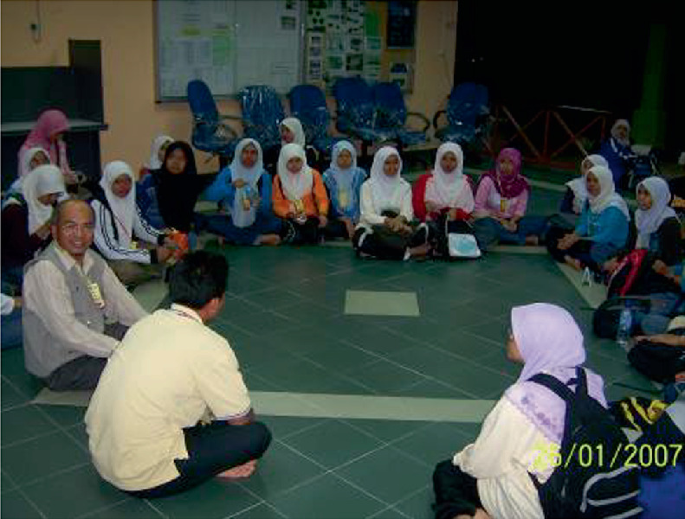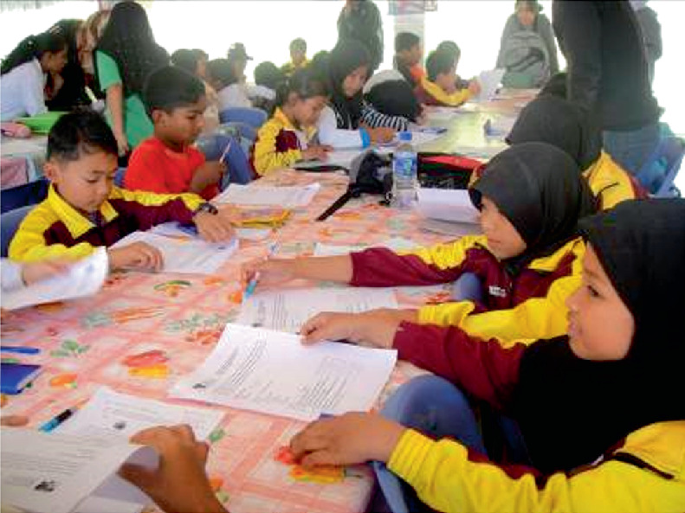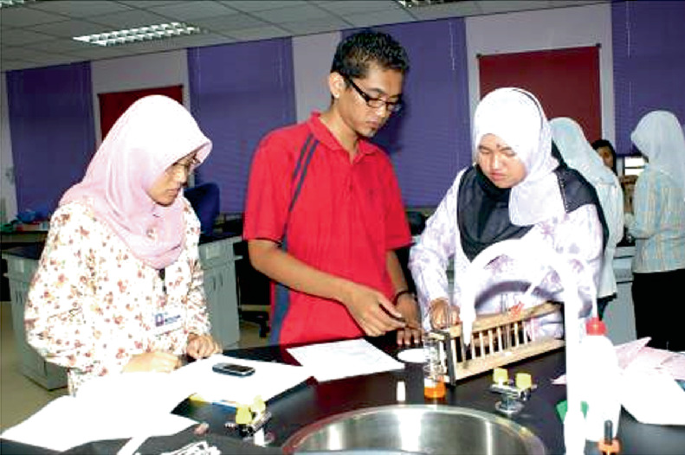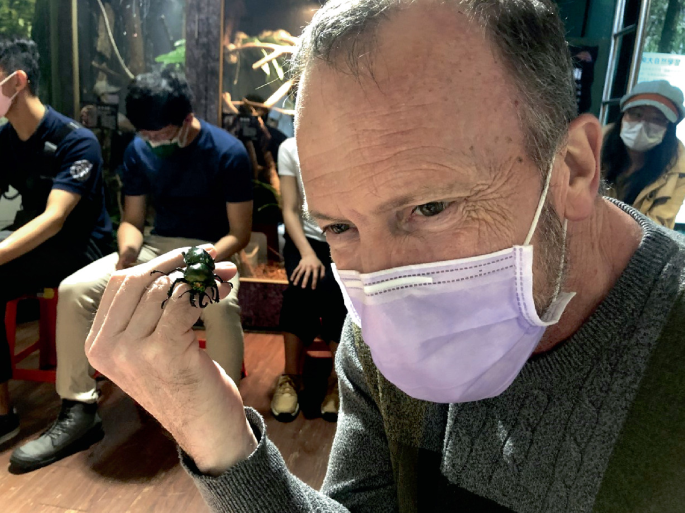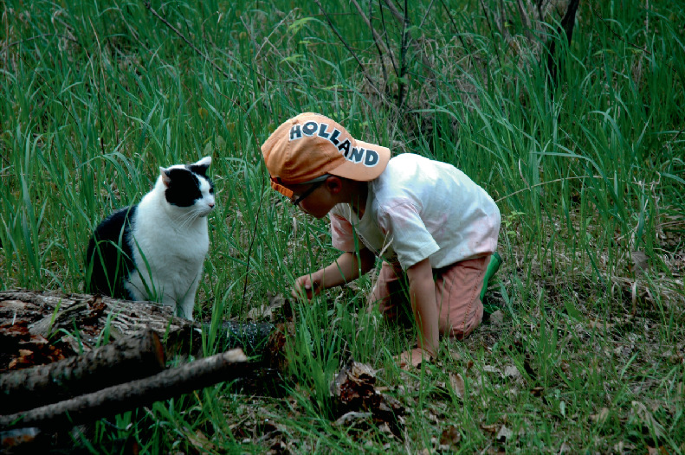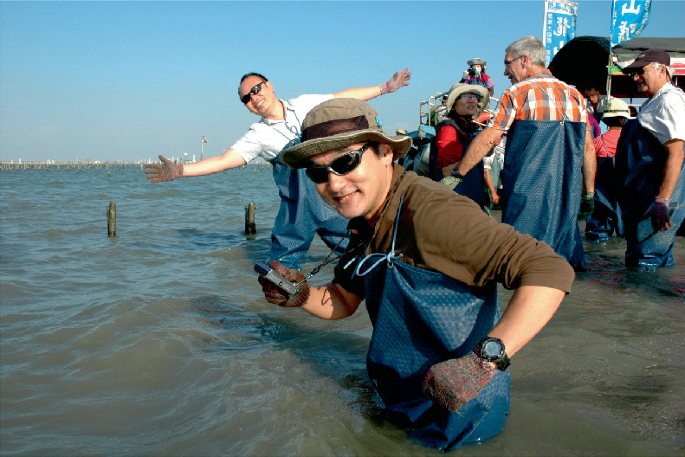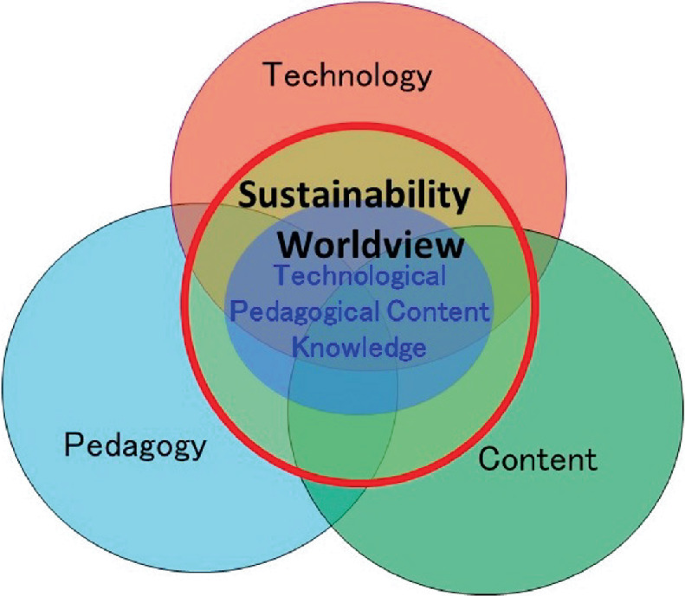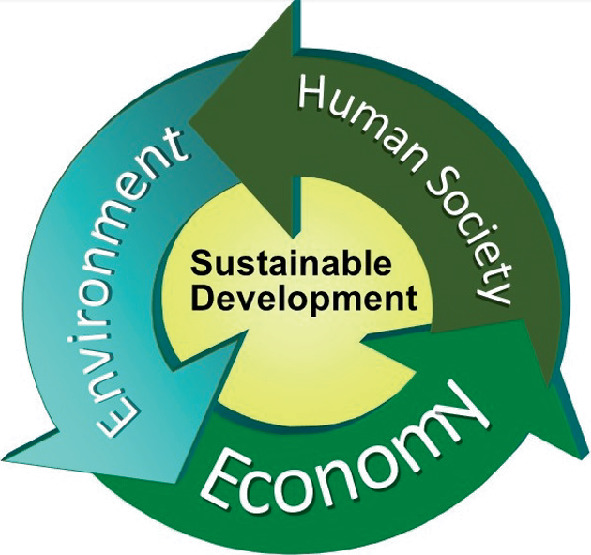Abstract
The concept of education is changing and that of the environment is also becoming different. Is environmental education: (1) a type of education to improve the environment; (2) education to improve the environment of education; or (3) a type of education to improve the education of people? In this chapter we focus on the ontology of the environment. In epistemology, we try to understand the nature and identity of the world around us and what environmental education is about. The purpose of environmental education is to cultivate citizens that: (1) have a working knowledge of environmental systems; (2) have concerns about environmental problems; and (3) have the capabilities to solve and actively participate in implementing solutions. Environmental problems must be solved through a root cause process, and environmental educators need to change the public’s mind on environmental issues using realistic and attainable education targets to establish environmentally friendly behaviors. Through outdoor, classroom, and nature-centered education programs, our goal is to establish important curriculum goals and novel learning methods for environmental education. Our goal is to have stakeholders consider environmental issues with open minds, understand the needs of other stakeholders, take a leadership role recognizing the existing and emerging environmental issues, and internalize them into specific environmental protective action plans.
All education is environmental education. By what is included or excluded, we teach students that they are part of or apart from the natural world. To teach economics, for example, without reference to the laws of thermodynamics or those of ecology is to teach a fundamentally important ecological lesson──that physics and ecology have nothing to do with the economy. That just happens to be dead wrong. The same is true throughout the curriculum.
David W. Orr, What is Education for? 1991:52.
You have full access to this open access chapter, Download chapter PDF
Similar content being viewed by others
1 Introduction
There are many definitions of education, but for education theory, Albert Einstein, who was a leader in pioneering educational reform point, had a unique point of view. He said: education is what remains after one has forgotten what one has learned in school (Fig. 1.1). Before the nineteenth century, education was the process of remembering or memorization. The San Zi Jing (Three-character Sutras) 《三字經》 that had been passed down to the people since the Southern Song Dynasty in China-proposed:
Recite them with the mouth, and ponder over them in your hearts. Do this in the morning; do this in the evening.
Sun Zhu (孫洙) (1711–1778) of the Qing Dynasty once said:
After reading three hundred Tang poems, you can at least in tone poems even if you can’t write them.
It has always been the case that students learn as much as possible until they become familiar. However, there are other theories that have always been disgusted with learning. Einstein believed that real learning is the process of internalizing information. Wang Yangming (王陽明) (1472–1529) of the Ming Dynasty stated in the Book of Instructions for Practical Living and Other Neo-Confucian Writings 《傳習錄》 that the most important things reading requires is self-mindedness, understanding second, and finally memorization. A friend once asked him, “How can I read a book but I can’t remember,” Yangming’s response was:
As long as you know, how do you remember? To know that it is the second meaning, you need to know your own self-ontology. If you want to remember, you do not know; if you want to know, you don’t see your own identity in your mind.
In other words, the more a human learns, the more they have yet to learn. If the purpose of learning information is because of a test requirement, then the information stored in our short-term memory serves the purpose of taking the examination, but recalling the information is often not possible because the information is not true memory. As students we’ve all experienced memorizing an amazingly large amount of information for an exam and flushing these data from our minds as soon as the exam was over. However, there are instances where information can be recalled for no apparent reason. These remnants of information that we internalized is what was really learned. Therefore, education and learning were intended to convey human thought through books; however, history shows that we’ve endured at least seventeen global pandemics since the 1300’s (Piret and Boivin 2021) and two world wars in the twentieth century. Since then, all established education methods are constantly being recast. Recitation no longer has a place in the original meaning of education. Yuval N. Harari (1976–), the author of Sapiens: A Brief History of Humankind (2011), and Homo Deus: A Brief History of Tomorrow (2016), argued in 21 Lessons for the 21st Century (2018) that the existing education system should use critical thinking, problem solving, effective communication, collaboration, and creativity to replace the current emphasis on intellectual indoctrination (Harari 2018).
If the concept of education is changing, then the definition of the environment is also changing. David W. Orr (1944–), a professor of environmental and political studies at Oberlin College, once said: All education is environmental education (Fig. 1.2; Orr 1991:52).
When we teach environmental education, we often ask our students and ourselves: Is environmental education, the process to improve the environment, to improve the educational environment, or to improve the education of people? We need to understand the own body of human beings and to enhance the thinking from the original human engraved thinking. In the process of interpretation, we understand epistemology to understand the nature of matter and understand what the environment is.
1.1 The Environment is a Concept
The environment refers to the space in which human beings can perceive their surroundings. In space, you can perceive all things that change in structure and function over time. In other words, the true nature of all things must be in a certain environment, even a vacuum is regarded as an environment (Baggini and Fosl 2003). Therefore, the environment is a concept that is bounded by space. However, in phenomenology, the environment incorporates the concept of time. The Austrian philosopher Edmund Husserl (1859–1938) believes that the human impression of the environment and the world will not gradually disappear due to the evolution of time, and because of the memory function of the brain, the human impression of the deceased. Therefore, the existence of the deceased can persist in perpetuity in the world as long as the living still remembers those that came before because they are stored in the brain as a living impression. These existing memory phenomena gradually change the human imagination of the dead over time. The concept of the environment means different things to different people because every person has their own interpretation or understanding of their environment, which is based on the spatial and temporal elements that they’ve experienced. In an ideal world, the definition of environment would mean the same to everybody, but inevitably, each person’s view of the environment is different.
For phenomenon scholars, existence is a base on self-awareness of all phenomena. Therefore, the person’s environment is the perceptual medium of a living being to an external stimulus, including the systemic sum of space and time of the instinctive response to the external stimulus (Crowther and Cumhaill 2018). What a living organism understands about its environment includes the perception of elapsed time and distance in its space. Therefore, to understand the nature of things, we must also recognize or be cognizant of the changes in our environment through space and time (Baggini and Fosl 2003).
The definition of environment varies with context and discipline. For biological/ecological systems, the natural environment refers to the sunlight, climate, soil, hydrology, and other ecosystems in which animals and plants coexist and within which we live. The social environment refers to the constitutive state formed by the social, psychological, and cultural conditions associated with human life and culture. From the perspective of environmental protection, the environment refers to the earth on which human beings depend. Therefore, the effectiveness of achieved protection is a critical indicator for revealing environmental quality in a region (Huang et al. 2014). In addition, we also need to understand the definition of environment in terms of regulations.
1.2 Lost in Translation
As it turns out the words environment and education were originally considered nouns and verbs and later translated and adopted into Asian cultures about one hundred years after appearing in English culture. We began to think about the concept of environmental education after World War II. In their 1947 book Communitas, the Goodman brothers talked about the planning of urban space where they discussed the idea of establishing green belts around cities and the design of industrial spaces, which at the time were utopian concepts (Goodman and Goodman 1947). They believed that a large part of the environmental education of the children would be based on technology; whereas a child brought up in a modern suburb or city might not even know what work papa does at the office. They also criticized the idea of environmental education because they felt environmental education was very close to the construction education of a built environment. In fact, it was far from the concept of environmental education.
From 1965 to 1970, US industrial production grew at a rate of 18% and at the same time, it boosted the economies of its World War II allies. However, the over-emphasis on development led to increased environmental pollution and since the 1960s, environmental problems arising from industrial development continue to emerge (e.g., love canal, Fowlkes and Miller 1987). The green agricultural revolution widely used chemical fertilizers and pesticides and among them, Dichloro-Diphenyl-Trichloroethane (DDT) hindered the reproductive ability of birds and reduced biodiversity. The book, published by Rachel Carson’s book, Silent Spring (1962) pointed out the consequences associated with the use/abuse of pesticides, which become incorporated into food chains and webs, negatively impacting natural ecosystems and human health. Carson believed that human beings should treat the surrounding environment and animals with a life-loving vision. She said: The public must decide whether it wishes to continue on the present road, and it can do so only when in full possession of the facts (Carson 1962:30). In the post 1960s, the slogan of environmental protection rang through the sky and the concept of the environmental protection movement gradually espoused the definition of environmental education in conservation.
2 Definition of Environmental Education
The term environmental education appeared in 1947. So, when did the earliest definition of environmental education come into being? The concept of environmental education in terms of modern pedagogy and its evolutionary history feels closely tied to our understanding and development of human psychology, sociology, and how humans learn. In this context, environmental education is a relatively recent field of study and predicated on the acceptance of our hypotheses by a small community of scholars.
If we look further back in time at the development of human cultures at a time when formal education systems did not exist, our ancestors then need to be recognized. In many/most indigenous cultures, the people learned about the environment within which they lived and passed their knowledge and skills to future generations, otherwise, they all died.
We, therefore, also need to identify several elements in indigenous cultures that are related to their knowledge base and resource management systems that could be of value to western science, but the semantic issues associated with Traditional Ecological Knowledge (TEK) and Traditional Ecological Management (TEM) can be overwhelming (Song et al. 2021). We may regard that TEK and TEM should be considered to be an element of the environment associated with indigenous cultures that is defined by their relationship and interactions with the environment, including all of the other biotic, abiotic elements present in their habitats. So, let’s take the definition way back and show how we used TEK and TEM to develop our knowledge systems relative to western science.
2.1 Initial Definition of Environmental Education
In 1962, Carson explained the importance of environmental protection and hoped to learn the ecological balance of nature through human awakening would achieve the purpose of harmonious coexistence between human and nature. In 1965 at an education seminar at the University of Keele environmental education was proposed as a theme, becoming the first conference in the UK to use the term environmental education (Palmer 1998). The meeting participants agreed that environmental education should become an essential part of all citizens, not only because of the importance of understanding aspects of their environment, but because of its immense educational potential in assisting the emergence of a scientifically literate nation. The meeting emphasized that teachers’ participation in basic education research should be strengthened to accurately determine the teaching methods and content of environmental education that are most suitable for modern needs. Therefore, the United Kingdom held a Council for Environmental Education in 1968.
In 1969, William Stapp (1929–2001), a professor at the University of Michigan, School of Natural Resources and Environment (SNRE), first defined environmental education as a process producing a citizenry that is knowledgeable concerning the biophysical environment and its associated problems, aware of how to help solve these problems, and motivated to work toward their solution (Stapp et al. 1969:30–31). According to Stapp, the purpose of environmental education was to cultivate citizens who had environmental knowledge, were concerned about environmental problems, and had the ability to solve and actively participate in the resolving the issues. Environmental problems should be resolved using root cause analyses and environmental educators should change the minds of the existing education targets and establish environmentally friendly behaviors.
Stapp is considered the father of environmental education in the United States of America (USA). He helped plan the first Earth Day in 1970, drafted the National Environmental Education Act, served as the first director of United Nations Education, Scientific and Cultural Organization (UNESCO), the first director of the Environmental Education at UNESCO, and promoted the first inter-governmental meeting of 146 countries and territories in Tbilisi, the former Soviet Union, in 1978. In 1984, Stapp assisted students to investigate cases of hepatitis infections from the Huron River, identify the cause of the problem, and worked with the local government to find a solution. In view of the importance of river surveys, he founded the Global Rivers Environmental Education Network (GREEN) in 1989. He cooperated with elementary schools in Ann Arbor, Michigan, USA and conducted many field trips with local elementary students and they investigated and taught students about problems in the natural environment and how to interact with them. He cared about academic research and more about social services, and led college students to promote environmental monitoring programs and successfully rehabilitate the Rouge River. In western science, the roots of environmental education can be traced back 1960s as early as the eighteenth century when Jean-Jacques Rousseau stressed the importance of an education that focuses on the environment (Rousseau and Bloom 1979).
2.2 The Extended Definition of Environmental Education
Stapp and his colleagues promoted the definition of environmental education, which was based on American pragmatism. They believed that emphasizing environmental knowledge could change reality through the power of action. Therefore, practical experience in environmental education was considered important because it emphasized taking knowledge and using that knowledge and/or experience to solve problems on natural resource management (Disinger 1985; 1990). Thus, environmental action or doing was better than dogma, and environmental experience was better than rigid principles. Therefore, the concept of environmental education had evolved to become a critical and creative clarification for research questions and value clarification (Harari 2018), interpreting environmental knowledge as a process of assessing the real environment, and scientific exploration (Fig. 1.3). The spirit of humanity, the standard of conduct was then incorporated into the real environment of human beings.
To promote environmental protection, academic institutions needed to provide environmental education-related courses such as basic environmental research, science, planning, management, economics, society, culture, and engineering. At the grade school level, the students should be taught the history of environmental protection and environmental protection measures. The aforementioned courses are meant to be broad because the environment and the associated issues are complicated. The environment and its associated ecosystems are not one size fits all. Not only are ecosystems different from one another the variation within each is vast. As such, Wals et al. (2014) considered the learning content of environmental education to be multi-disciplinary, based on environmental problem assessment, critical thinking, morality, creativity, and make judgments on environmental issues. The process of environmental education helps observation and problem-solving, with the opportunity for individuals to promote environmental improvement actions to ensure positive environmental behaviors (Fig. 1.4). Therefore, environmental education includes the social, abiotic, and biological aspects, of the environment including natural resource conservation, environmental management, ecological principles, environmental interactions and ethics, and sustainability (Fig. 1.5).
The target of environmental education should include a continuum from primary school to the university and include theoretical, practical, indoor, and outdoor experiences. This is a group of people enjoying nature in a Swiss environmental education program in 2009 (Matterhorn, Great north faces of the Alps, Valais, Switzerland) (Photo by Wei-Ta Fang)
Environmental Education is defined in many ways, but each definition considers it to be a discipline or process that teaches us how to behave in a manner that promotes the responsible management of our environment and resources. This then helps the environment function in a more natural way, rather than healing anthropogenic wounds. We detected the Environmental Education Act in Taiwan (Republic of China), there is.…as a discipline that enhance the environmental awareness, environmental ethics, and responsibility of the nation taking as a whole, so as to safeguard the ecological balance of the environment, respect lives, promote social justice, and cultivate environmental citizens and environmental learning communities (The Environmental Education Act) (Ministry of Justice 2017). Therefore, in terms of education content, environmental education was intended to integrate aspects of biology, chemistry, physics, ecology, earth science, atmospheric science, mathematics, and geography as an integrated discipline toward an education for sustainability (EfS) (Evans 2020). Methods of educational research include the applied social sciences such as psychology, sociology, culture, history, anthropology, economics, political science, and information science.
The First International Working Meeting on Environmental Education in the School Curriculum was organized by the UNESCO, and the International Union for Conservation of Nature (IUCN) in Nevada, USA in 1970. A participant resolution developed the statement that the elements of environmental education are not completely combined by any single discipline. It is the product of partnerships built on sound science, public awareness, environmental issues, and outdoor educational methods (Fig. 1.6). UNESCO specifically stated that environmental education programs taught students a respect for the nature and natural environments and raised citizens' environmental awareness (UNESCO 1970). Therefore, the organization emphasized the importance of environmental education in protecting the society’s quality of life in the future by protecting the environment, eradicating poverty, minimizing inequality, and ensuring sustainable development. Cerovsky (1971, p. 4) defined environmental education as.
…a process of recognizing values and clarifying concepts in order to develop skills and attitudes necessary to understand and to appreciate the interrelatedness among man, his culture, and his biophysical surroundings. Environmental education is also entailed practice in decision-making and self-formulation of code behavior about issues concerning environmental quality.
The target of environmental education includes education in the school system, and education from primary, middle, vocational, and technical schools, universities, and research institutes. However, environmental education also includes the dissemination of environmental education, including print, books, websites, and other media. In addition, aquaria, zoos, parks, and nature centers in social environmental education should all provide ways to teach citizens about the environment (Fig. 1.6) (see Box 1.1).
Box 1.1: The Legal Definition of Environmental Education, Republic of China (ROC)
The Article 3 of Republic of China’s Environmental Education Act stated as Environmental education : Referring to the adaptation of educational means by which to culminate the citizens to understand their ethnical relationship to the environment , enhance the citizens ’ environmental protection awareness, skills, attitudes and values , and steer the citizens to emphasize the environment and adopt actions to achieve a civility education process that harbors sustainable development .
2.3 The Goals of Environmental Education
The attendees of the Tbilisi Conference in 1977 endorsed goals for environmental education into five categories (UNESCO 1977). They are:
-
Awareness: to help social groups and individuals acquire an awareness of and sensitivity to the total environment and its allied problems;
-
Knowledge: to help social groups and individuals gain a variety of experiences in and acquire a basic understanding of the environment and its associated problems;
-
Attitudes: to help social groups and individuals acquire a set of values and feelings of concern for the environment and the motivations for actively participating in environmental improvement and protection;
-
Skills: to help social groups and individuals acquire the skills for identifying and solving environmental problems; and
-
Participation: to provide social groups and individuals with the opportunities to be actively involved at all levels in working toward resolving environmental problems (UNESCO 1977, p. 71).
Hungerford et al. (1980) organized and suggested that these goals should be operationalized within the school curriculum and categorized into four (4) levels (Table 1.1 and Figs. 1.7, 1.8 and 1.9).
Goals of environmental education (adapted and modified after Hungerford et al. (1980) and revised by Wei-Ta Fang)
3 Approaches to Environmental Education
In this section we discuss various methods/pedagogies used in the field of environmental education. Environmental education, like science education, is interdisciplinary and offers a variety of learning strategies, which are determined by learning resources, learning time, learning space, learning curriculum, and student attributes. These differences all affect education approaches in some way. We briefly describe outdoor education, classroom education, and nature-centered education. We include the following seven methods, including: school environmental education, school nature education, place-based education, and projects curricula; and nature center education in social and environmental education, science and environmental education in zoos and museums (Falk 2009; Falk and Dierking 2014, 2018; Ardoin et al. 2016) or environmental education using surveys, assessments and actions on environmental issues (Hsu et al. 2018), and science-technology-society (STS) (Winther et al. 2010). Each approach addresses important curriculum goals and novel learning methods for environmental education. Therefore, environmental educators should choose and apply the most effective methods for their students and environment. We also explore sustainable development education from the perspective of environmental education. We also understand that a well-rounded curriculum aims to strengthen environmental awareness and environmental sensitivity, environmental knowledge, environmental ethics and values, environmental action skills, and environmental action experience. We explore values, topics, and learning in the context of Bamberg and Moeser (2007), Winther et al. (2010) and Dillion and Wals (2006).
3.1 Outdoor Education
Outdoor education is based on a place-based education and project curricula in the United States that include: the Project Learning Tree, Project WILD, and Project WET. In addition, surveys, assessments, and actions on environmental issues, as well as environmental education in STS that can be used for exploration, included the following methods (Braus and Wood 1993; Engleson and Yockers 1994).
3.1.1 Uses of the Senses
Let the learners use their senses to experience nature directly using their eyes, ears, nose, tongue, and body to feel the environment over the four seasons (Fig. 1.10).
3.1.2 Physical Exercises and Explanations
By using real examples, objects that can be obtained, and through practical methods, the natural or scientific phenomena contained in the environment are directly explained by practical performance, allowing learners to observe directly or actual experience (Fig. 1.11).
3.1.3 Surveys and Experiments
Let learners think about environmental issues and environmental phenomena through the steps of generating a hypothesis, survey, data collection, experiments, data collection, analysis, writing of small papers, briefings, etc., and actually discuss what happens behind various environmental phenomena problem.
3.1.4 Attractions Travel
Let learners go to various attractions and actually visit forests, mountains, seashores, wetlands and other areas to observe and obtain first-hand tourism and observation experiences (Fig. 1.12). Each observation and survey is a purposeful activity, and learners can learn about certain topics in advance through books, the Internet, and scenic spot information.
Outdoor education is based on a place-based education and project. The U.S. Environmental Protection Agency (U.S. EPA), North American for Environmental Education (NAAEE), and Environmental Protection Administration of the Executive Yuan, Republic of China (Taiwan EPA) are the key to promote environmental education as partnerships. They jointly launched the Global Environmental Education Partnership (GEEP) in 2014, with the vision of creating a sustainable future where people and the environment prosper together through the power of education. The GEEP established the Asia–Pacific Regional Center (APRC) in Taiwan as a network center for environmental education in Southeast Asia in 2019 (Toucheng Leisure Farm, Ilan, Taiwan, 2021; please see https://geepaprc.org/en) (Photo by Wei-Ta Fang)
3.1.5 Research Questionnaires and Interviews
An issue questionnaire is performed through research methods for small papers. Through this approach, learners can obtain relevant environmental information. The perceptions and ideas of different interviewers, in addition to quantified research data, are to conduct interviews to understand qualitative information and to make more environmental issues for an in-depth discussion (Fig. 1.13).
3.1.6 Outdoor Observation of Nearby Places
Using the method of place-based education, selecting nearby places, conducting environmental surveys or observation activities, actually guiding learners to study in outdoor environments, and helping learners to understand the natural exploration, experience, and awareness (Fig. 1.14).
3.1.7 Data Collection and Interviews
Let learners collect the data on specific environmental issues so that they can have a deeper understanding of related environmental issues or areas of study, through the library, Internet, photographs, and interview specific people to help clarify questions when facing environmental problems if more information is needed (Figs. 1.15).
3.2 Classroom Education
Classroom education in environmental education includes campus environmental education, which can develop place-based education, project curricula, and STS (Winther et al. 2010). During the learning process, teachers are encouraged to participate in professional learning sessions, and fully understand the learner’s learning role, that include:
3.2.1 Reading and Writing
In the classroom, students read environmental issues and events and write their thoughts and feelings in notebooks. Younger students can draw their thoughts and ideas (Fig. 1.16).
3.2.2 Case Study
Let learners directly collect and integrate data on environmental issues or discuss and assess the environmental impact of related issues on our day-to-day lives and to think about how to deal with environmental damage (Fig. 1.17).
3.2.3 Value Clarification
Let learners use each other’s relationships between value and morality for discussion and communication. During the discussion, through mutual discussions, establish conclusions that everyone can accept to assist learners to establish correct environmental attitudes and values. That is, set up some ground rules so the environment remains safe.
3.2.4 Treemap and Brainstorming
Through brainstorming or treemap thinking, help learners connect different relationships, situations, ideas, and processes to understand the relationship of events (Figs. 1.18 and 1.19).
3.2.5 Debate
Through debate activities, learners can learn from different topics facing the environment, and learn to use data collection, communication, and critical thinking skills (Fig. 1.20).
3.2.6 Group Learning
Through the process of group learning, in addition to being able to face environmental issues more effectively and conduct more in-depth discussions, learners can learn to establish team tacit understanding, self-social ethics norms, and know the thoughts deep inside themselves. This illustrates the importance of diversity and inclusion in the program (Fig. 1.21).
3.2.7 Environmental Arrangement
Through the environmental arrangement activities of the beginning of school, festivals, or parent-teacher talks, let learners participate in the creation and arrangement of teaching space. In addition, to help learners have a complete learning space, they can also learn to judge the overall environmental learning.
3.2.8 Comprehensive Discussions
Scout courses covering aspects of integrated geography, mathematics, nature, health and hygiene, or Chinese language learning areas, and in-depth research and discussion on environmental issues and issues (Fig. 1.22).
3.2.9 Activity Workshop
Let learners guide the demonstration and teaching of personnel, learn to operate, or produce a kind of labor course that requires hands-on work, and use hands-on operations. The process of the drill included working experience in farming, forestry, fishing, insect hotel building, animal husbandry, and the creation of handicrafts (Figs. 1.23 and 1.24).
3.2.10 Game Learning
Game learning is different at different levels. This is important because it brings to mind what today’s youth think is important and fun. For example, we think memorization is boring and old school, what will the younger generation of student’s think about these new approaches in 50 years? 100 years? How do we keep our learning methods current in the face of rapidly changing technologies, norms, and values? In game learning, open-ended play is adopted. The rich teaching materials of games are the basis of learning. In modeled-play, learn using simulated creatures and playing with pets (Fig. 1.25). In purpose-framed play, games are used for experience and teacher-student interaction is used (Cutter-Mackenzie et al. 2014).
3.2.11 Environmental Action
Use STS learning methods to allow learners to participate in practical environmental actions such as ecological management, persuasion, consumerism, political action, and legal action, and work together to improve environmental issues (Fig. 1.26).
4 Development of Environmental Education
The implementation of environmental education is to adopt an infusion method and conduct integrated curriculum across learning areas to connect the relationship between the surrounding their environment. Environmental education professionals generally believe that the environmental education be integrated into the school curriculum of each school year, from kindergarten to grade 12 (K-12). However, discipline integration of environmental education has not occurred in countries around the world. How to integrate environmental education into the subject in the school curriculum requires the use of teaching materials and methods (Fig. 1.27). This may be related to the type of teaching in each subject (Simmons 1989). If the core of environmental education is to incorporate the behavioral decisions of governments, enterprises, families, and individuals into the education process, then the development of environmental education from kindergarten to grade 12 (K-12) needs to be considered and economic development, a parallel trend of environmental development that takes into account social development.
The teaching model of traditional environmental education is centered on environmental issues. However, this kind of teaching method only focuses on knowledge transfer. It does not consider social emotional learning. At the same time, it does not consider the formation of environmental attitudes, and it is difficult to cultivate responsibility—environmental behavior students. Furthermore, environmental education places too much emphasis on analysis of issues, so that students learn learned helpless. It has a sense of despair and helplessness about the future development of the global environment. It is impossible to learn through a position of control—motivation and perseverance to change the world. In addition, emotional changes in environmental education are not easy to change through indoor courses, students are easily frustrated in the classroom, and it is difficult to learn the true meaning of pro-environmental behavior. If we say that the past education focused on one-way narrative transmission, we should then look at environmental issues with a healthy mindset. By caring about environmental protection issues, based on teachers’ pedagogical content knowledge and domain knowledge (Shulman 1986a, b; 1987a, b; Fig. 1.28), supporting the idea of a sustainable worldview, strengthening the content of various disciplines in a common learning approach, and internalizing it into specific environmental protection actions.
The so-called pedagogical content knowledge model, the content includes the teacher’s understanding of specific subject content, the teacher’s grasp and use of specific subject content representation, and the teachers ‘learning and learners’ understanding. The content of teaching content knowledge includes the content of subject knowledge and general teaching knowledge, and goes beyond the teaching material knowledge itself. The teaching content knowledge was proposed by an American educational psychologist, named Lee Shulman (1938–). He believes that the subject teaching knowledge goes beyond the scope of subject expertise and is subject matter expertise at the teaching level. Shulman pointed out that teachers’ knowledge can be divided into three categories, namely, pedagogical knowledge, subject matter knowledge, and pedagogical content knowledge (Shulman 1986a, b; 1987a, b). Teaching knowledge emphasizes the principles, methods, and strategies of teaching. Disciplinary content knowledge emphasized teachers’ knowledge on the facts, concepts, principles of the subject areas, and how they are organized. In addition, teaching content knowledge emphasizes that when teaching, teachers know how to use a systematic statement of their subject content knowledge, make it easy for students to understand the subject content through the most effective teaching method, and teachers can understand students’ previous concepts of the subject content, Reasons for learning difficulties and strategies for remedial teaching.
Shulman said:
Teaching content knowledge means that teachers must be able to express what they are teaching. In the category of teaching content knowledge, teachers include the most taught topics and the most effective forms of expression in the subject.
They are the most powerful analogies, examples, illustrations, demonstrations, and clarifications. That is, teachers regroup in special subjects of the subject and behave in an appropriate way to promote students to understand the content of the teaching. Knowledge of teaching content also includes teachers understanding what factors make it difficult or easy for students to learn about specific concepts when learning, and to understand the concepts and prerequisite concepts held by students of different ages and backgrounds when studying these topics. (Shulman 1986b:9).
Communication environmental and educational concepts, goals, methods, and strategies are based on the concept of immersive environmental education. Explore the in-depth fields of environmental education according to the different cultural and social backgrounds of teachers (Fig. 1.29). Therefore, based on the critical analysis of the problem, the process of learning is more important than the outcome. Moreover, the limitations of environmental, social, and economic issues, are understood, thus the teaching content can be linked to the real world.
Environmental education is not only about providing tools and technology but also necessary to cultivate students’ environmental literacy. Therefore, the teaching of environmental education, in addition to teaching knowledge, also needs to inspire students’ social responsibility. Therefore, environmental education needs to put forward values and strengthen the thinking of sustainable development in the curriculum. The main core lies in the fundamental values of “sustainable development education.” UNESCO defined the core according to the following topics:
4.1 Values
-
Respect the dignity and human rights of all human beings worldwide and commit to social and economic justice for all;
-
Respect the human rights of future generations and promise intergenerational responsibilities (Kaplan et al. 2005; Liu and Kaplan 2006);
-
Respect and care about the diversity of life in large communities, including the protection and restoration of the earth's ecosystem; and
-
Respecting cultural diversity and promising to build tolerance, non-violence, and a culture of peace locally and globally.
4.2 Exploration Topics
4.2.1 Environmental Orientation
Environmentally oriented education needs to include attention on natural resources (like water, energy, agriculture, forestry, mining, air, waste disposal, toxic chemical treatment, and biodiversity), climate change, rural development, and sustainability. The purpose of mitigation and adaptation in the cities, disaster prevention, and mitigation are to strengthen the understanding of the fragility of resources and the natural environment, strengthen the understanding of the negative impact of human activities and decision-making on the environment, and include environmental factors. These factors must be considered in formulating socio-economic policies.
4.2.2 Economic Orientation
The Economic Oriented Education needs to focus on the issues of poverty eradication, strengthening the social responsibility of enterprises and universities, and strengthening the efficiency of the market economy. The purposes are to understand limitation, potential on an economic growth, and how they could affect the society, environment, and culture. The impact of environmental protection, culture, and social justice on the correct assessment of individual and social consumption behavior is consistent with the goal of sustainable development.
4.2.3 Social Orientation
Socially Oriented Education needs to include concerns about human rights, peace and human security, freedom, gender equality, cultural diversity, and cross-cultural understanding, as well as emphasis on social and personal health, and strengthening government management and people’s governance. Its purpose is to understand the role of social systems and environmental change in development and to strengthen models and institutions of democratic participation. The democratic participation system provides opportunities to express opinions, adjust conflicts, decentralize government, build consensus, and resolve differences. In addition, cultural assessments in society need to be strengthened to protect the values, practices, languages, and knowledge systems (Arenas et al. 2009). At the same time, the cultural foundations of social, environmental, economic, and the sustainable development, are seen as inter-connected. In other words, sustainable development emphasizes interrelationship through culture. In the process of sustainable development education, it is particularly necessary to pay attention to the diversity of culture and ethnic groups, and each ethnic group tolerates, respects, and understands each other in order to shape the values of equality and dignity.
We can know that the exploration of sustainable development education to embedding sustainability from environmental education can be an overlapping circle model, which is an intersecting system (Purvis et al. 2019). This model recognizes the intersection of economic, environmental, and social factors. Based on our research, we resized the circles to show that one factor has advantages over the other two. In the eyes of economists, economy is better than society and society is better than environment. This model means that economy can exist independently of society and environment. Therefore, we use the next more accurate system model for illustration (Fig. 1.30).
Because human beings cannot survive outside of their environment, they do not have an environment. It is just like a fish without water, which makes it difficult for them to survive. If we ask all the fishermen in the sea if overfishing the fisheries is a social disaster or an economic disaster, they will then say that it is all the above. Therefore, the nested dependency model reflects the reality of this common dependency. In other words, human society is a wholly owned subsidiary of the environment. An economic society, without food, clean water, fresh air, fertile soil, and other natural resources, we are “cooked.”
5 Summary
Environmental Education in the twenty-first century and Education for Sustainable Development have also regarded as the key to reconstructing ecologically responsible citizens to embrace a pedagogy grounded in ecosocialism (Arenas 2021). With the adoption of the 2030 Global Education Agenda, United Nations Educational Scientific and Cultural Organization (UNESCO) is now using the United Nation’s recently developed Sustainable Development Goals (SDGs) to strengthen the Global Action Follow-up Program on Education for Sustainable Development (i.e., GAP 2030). In general, the purpose of environmental education is to cultivate citizens who understand the biophysical environment and related issues, how to help solve problems, and actively understand the ways to solve problems (Stapp et al. 1969). Currently, we provided a wider range of services, strengthened appreciation of the multicultural and environmental systems around humanity, and ensure the sustainable development of human society. Shin Wang (1945–), the emeritus professor of the Department of Geographical Environmental Resources, National Taiwan University, once said: “Hometown is the beginning of learning. You need to be based on Taiwan to look at the world.” The transformation of social environment and silent environmental changes to the environmental protection of the aboriginal people has produced their own views of environmental redemption (Fang et al. 2016).
At the beginning of the writing of this book, we always told ourselves in the heart: “The environment and ecology are extremely vulnerable, and only those of us who are not fame and fortune environmentalists will help the speechless environment.”
In light of today’s social consumerism, inequality has occurred in three areas: environmental, social, and economic. We strengthen our creativity sharing our experiences within the education system with others to develop a shared social imagination. We communicate the concepts of the environment and education based on the concept of immersive environmental education. Therefore, the environmental education concepts, implementation processes, and education policies listed in this chapter have achieved the feasibility of environmental education in various fields through teaching, research, and practice. Environmental education is not just about providing tools and technologies, it is important to cultivate a learners’ environmental literacy. Therefore, the teaching of environmental education, in addition to teaching knowledge, also needs to inspire students’ social responsibility.
References
Ardoin NM, Schuh J, Khalil K (2016) Environmental behavior of visitors to an informal science museum. Visit Stud 19(1):77–95
Arenas A (2021) Pandemics, capitalism, and an ecosocialist pedagogy. J Environ Educ 52(6):371–383
Arenas A, Reyes I, Wyman L (2009) When indigenous and modern education Collide. In: Zajda J, Freeman K (eds) Race, ethnicity and gender in education. Globalisation, Comparative Education and Policy Research, vol 6. Springer, Dordrecht
Baggini J, Fosl PS (2003) The philosopher’s toolkit: a compendium of philosophical concepts and methods. Wiley-Blackwell, Oxford
Bamberg S, Möser G (2007) Twenty years after Hines, Hungerford, and Tomera: a new meta-analysis of psycho-social determinants of pro-environmental behaviour. J Environ Psychol 27(1):14–25
Braus A, Wood D (1993) Environmental education in the schools-creating a program that works. NAAEE Peace Corps Washington, DC
Carson R (1962) Silent spring. Fawcett, Greenwich
Cerovsky J (1971) Environmental education: yes—but how? In: Handbook of environmental education with international studies. Wiley, London, p 4
Crowther T, Cumhaill CM (2018) Perceptual ephemera. Oxford University Press, Oxford
Cutter-Mackenzie A, Edwards S, Moore D, Boyd W (2014) Young children’s play and environmental education in early childhood education. Springer, New York
Dillion J, Wals AEJ (2006) On the danger of blurring methods, methodologies, and ideologies in environmental education research. J Environ Educ Res 12(3–4):549–558
Disinger JF (1985) What research says: environmental education’s definitional problem. Sch Sci Math 85(1):59–68
Disinger JF (1990) Environmental education for sustainable development? J Environ Educ 21(4):3–6
Engleson DC, Yockers DH (1994) A guide to curriculum planning in environmental education. Wisconsin Dept. of Public Instruction, Madison
Evans N (2020) What ought to be done to promote education for sustainability in teacher education. J Philos Educ 54(4):817–824
Falk JH, Dierking LD (2014) The museum experience revisited. Left Coast Press, Walnut Creek
Falk JH, Dierking LD (2018) Learning from museums, 2nd edn. Rowman & Littlefield, Lanham
Falk JH (2009) Identity and the museum visitor experience. Left Coast Press Walnut Creek
Fang W-T, Wu H-W, Lee C-S (2016) Atayal’s identification of sustainability: traditional ecological knowledge and indigenous science of a hunting culture. Sustain Sci 11(1):33–43
Fowlkes MR, Miller PY (1987) Chemicals and community at Love Canal. In Johnson BB, Covello VT (eds) The social and cultural construction of risk. Technology, risk, and society, vol 3. Springer, Dordrecht. https://doi.org/10.1007/978-94-009-3395-8_3
Goodman P, Goodman P (1947) Communitas: means of livelihood and ways of life. Vintage Books, New York
Harari YN (2018) 21 Lessons for the 21st century. Spiegel & Grau, New York
Huang C-W, Chiu Y-H, Fang W-T, Shen N (2014) Assessing the performance of Taiwan’s environmental protection system with a non-radial network DEA approach. Energy Policy 74:547–556
Hungerford HR, Peyton RB, Wilke RJ (1980) Goals for curriculum development in environmental education. J Environ Educ 11(3):43–44
Kaplan MS, Liu ST, Steinig S (2005) Intergenerational approaches for environmental education and action. Sustain Comm Rev 8(1):54–74
Liu S-T, Kaplan MS (2006) An intergenerational approach for enriching children’s environmental attitude and knowledge. Appl Environ Educ Comm 5(1):9–20
Ministry of Justice (2017) The environmental education act, Amended Date: 29 Nov 2017, Category: Environmental Protection Administration, Taiwan, ROC. https://law.moj.gov.tw/ENG/LawClass/LawAll.aspx?pcode=O0120001
Orr D (1991) What is education for? Six myths about the foundations of modern education, and six new principles to replace them. Context 27(53):52–58
Palmer J (1998) Environmental education in the 21st century: theory, practice, progress, and promise. Routledge, London
Piret J, Boivin G (2021) Pandemics throughout history. Front Microbiol 3594. https://doi.org/10.3389/fmicb.2020.631736
Purvis B, Mao Y, Robinson D (2019) Three pillars of sustainability: in search of conceptual origins. Sustain Sci 14(3):681–695
Rousseau J-J, Bloom A (1979) Emile: or on education. Basic Books, New York
Shulman LS (1986a) Paradigms and research programs in the study of teaching: a contemporary perspective. In Wittrock MC (ed) Handbook of research on teaching, 3rd edn. Macmillan, London, pp 3–36
Shulman LS (1986b) Those who understand: knowledge growth in teaching. Educ Res 15(2):4–14
Shulman LS (1987a) Knowledge and teaching: foundations of the new reform Harvard Educ Rev 57:1–22
Shulman LS (1987b) Learning to teach. AAHEA Bull 5–9
Simmons D (1989) More infusion confusion: a look at environmental education curriculum materials. J Environ Educ 20(4):15–18
Song KS, LePage B, Fang W-T (2021) Managing water and wetlands based on the Tayal’s interpretation of Utux and Gaga. Wetlands 41(92) https://doi.org/10.1007/s13157-021-01473-y
Stapp WB (1969) The concept of environmental education. Environ Educ 1(1):30–31
UNESCO (1970) International working meeting on environmental education in the school curriculum, Final Report, at Foresta Institute, Carson City, Nevada. IUCN and UNESCO, Paris
UNESCO (1977) Intergovernmental conference on environmental education, Tbilisi Declaration (USSR) 14–26 Oct 1977 (final report). UNESCO, Paris
Wals AEJ, Brody M, Dillon J, Stevenson RB (2014) Convergence between science and environmental education. Science 344(6184):583–584
Winther AA, Sadler KC, Saunders GW (2010) Approaches to environmental education. In: Bodzin A, Klein S, Weaver S (eds) The inclusion of environmental education in science teacher education. Springer, Dordrecht
Author information
Authors and Affiliations
Corresponding author
Rights and permissions
Open Access This chapter is licensed under the terms of the Creative Commons Attribution 4.0 International License (http://creativecommons.org/licenses/by/4.0/), which permits use, sharing, adaptation, distribution and reproduction in any medium or format, as long as you give appropriate credit to the original author(s) and the source, provide a link to the Creative Commons license and indicate if changes were made.
The images or other third party material in this chapter are included in the chapter's Creative Commons license, unless indicated otherwise in a credit line to the material. If material is not included in the chapter's Creative Commons license and your intended use is not permitted by statutory regulation or exceeds the permitted use, you will need to obtain permission directly from the copyright holder.
Copyright information
© 2023 The Author(s)
About this chapter
Cite this chapter
Fang, WT., Hassan, A., LePage, B.A. (2023). Introduction to Environmental Education. In: The Living Environmental Education. Sustainable Development Goals Series. Springer, Singapore. https://doi.org/10.1007/978-981-19-4234-1_1
Download citation
DOI: https://doi.org/10.1007/978-981-19-4234-1_1
Published:
Publisher Name: Springer, Singapore
Print ISBN: 978-981-19-4233-4
Online ISBN: 978-981-19-4234-1
eBook Packages: Social SciencesSocial Sciences (R0)






